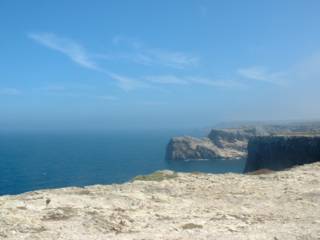The Scotsman newspaper (in conjunction with RSPB Scotland) is running a poll to find Scotland's national bird. A short list of twelve candidates has been drawn up. My immediate reaction was to favour Golden Eagle, and after further thought (see list below) I still hold that view. However I also thought about some other possible candidates not on the original list, including Blue Tit (one of the the most familiar birds in many Scottish gardens, especially given the decline of the House Sparrow), Magpie (would definitely win if having a booming population was one of the criteria), Herring Gull (ditto) and Chicken (well, we do consume around 1.5 million every week).
My views of the runners and riders.....
CAPERCAILLE 1001
Points for:
Not found elsewhere in UK
Cantankerous
Spectacular
Rare
Points against:
Introduced
May go extinct
Unfamiliar
CRESTED TIT 1002
Points for:
Not found elsewhere in UK
Rare
Cute
Industrious
Points against:
Small
Unfamiliar
GANNET 1003
Points for:
Spectacular
Scotland has largest colonies in the world
Historic link (Sula bassana)
Economic importance (until recently)
Points against:
Common elsewhere in the UK
Not particularly rare or exceptional
GOLDEN EAGLE 1004
Points for:
Spectacular
Regal / proud
Romantic
Synonymous with wild areas
Rare
Scotland has strongest population in Europe
Breeds only rarely elsewhere in the UK
Points against:
Unfamiliar (most Scots have never seen one)
OSPREY 1005
Points for:
Spectacular
Rare
Well known
Successful
Synonymous with wild areas
Breeds only rarely elsewhere in the UK
Points against:
Found all over the world
May become common elsewhere in the UK
PEEWIT 1006
Points for:
Familiar
Cute
Declining
Points against:
Unspectacular
PEREGRINE FALCON 1007
Points for:
Spectacular
Synonymous with wild areas
Comparatively rare
Scotland has strongest population in Europe
Points against:
Familiar in many other countries
Increasing all over the UK
PTARMIGAN 1008
Points for:
Interesting biology
Not found elsewhere in the UK
Synonymous with wild places
Points against:
Associated with shooting
PUFFIN 1009
Points for:
Cute
Familiar
Synonymous with wild places
Scotland holds huge colonies
Points against:
Common elsewhere in the UK and other countries
RED GROUSE 1010
Points for:
Economic importance (“glorious twelfth” and all that)
Symbolic significance (brand names etc)
Synonymous with wild places
Points against:
Associated with shooting
Widespread in UK and elsewhere
SEA EAGLE 1011
Points for:
Spectacular
Rare
A success story
Confined within the UK to Scotland
Synonymous with wild areas
Points against:
Introduced
Lives by scavenging
Well established in other countries (e.g. Scandinavia)
SCOTTISH CROSSBILL 1012
Points for:
Scotland’s only endemic species
Rare
Points against:
Small
Obscure
May lose species status
NatHistMus.jpg)





